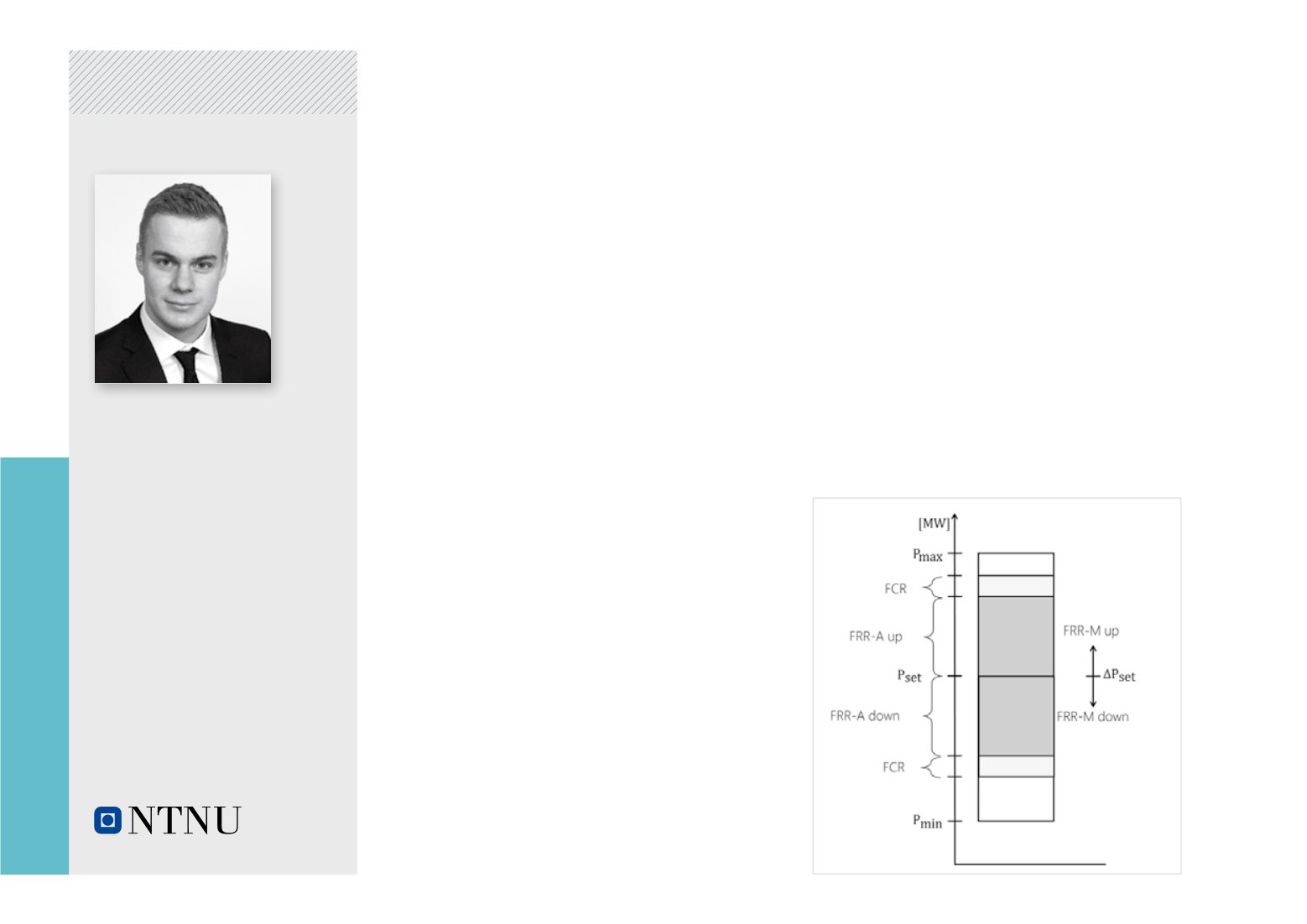

Background
In the EU there are ambitious targets for
increasing the renewable electricity generation,
especially wind- and solar-power. Due to the
stochastic characteristics of the renewable
generation, additional balancing is needed to
secure a stable power grid. The Norwegian
government recently gave concession to build
two HVDC cables, 1400 MW both to Germany
and UK, giving Norwegian hydro producers
access to balancing markets at the European
continent. My PhD will focus on methods for
implementing additional markets, such as the
balancing reserves markets, in hydropower
scheduling models.
Due to the underlying uncertainty of inflow and
power prices, hydropower scheduling for long-
term models are considerably difficult to solve.
The amount of potential stochastic outcomes
explode over time, potentially diminishing the
computational tractability. In order to cope with
thisissuethemethodofStochasticDualDynamic
Programming (SDDP) has proven beneficial for
solving these types of problems. The method
is, however, based on Linear Programming
(LP), such that to model the added complexity
provided by balancing reserve markets, e.g.
integer bids and minimum production limits, is
cumbersome.
Themainpurposeof thePhD is to investigateand
potentially develop methods for incorporating
multi-market hydropower scheduling.
PHD THESIS
Department of Electric
Power Engineering
2015-2018
Integrating Balancing
Markets in Hydropower
Scheduling Models
Supervisor:
Magnus Korpås
Co-supervisor:
Arild Helseth and Gerard
Doorman
Martin N. Hjelmeland
Illustration of different balancing reserves
that could be provided from a hydropower
station. FCR, FRR-A and FRR-M
respectively refers to primary, secondary
and tertiary balancing reserves
80
















